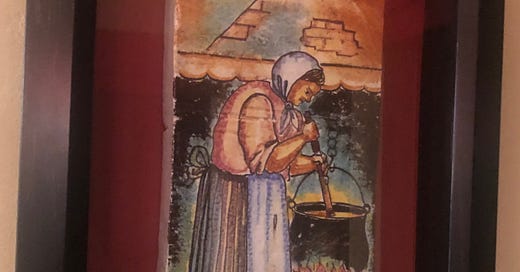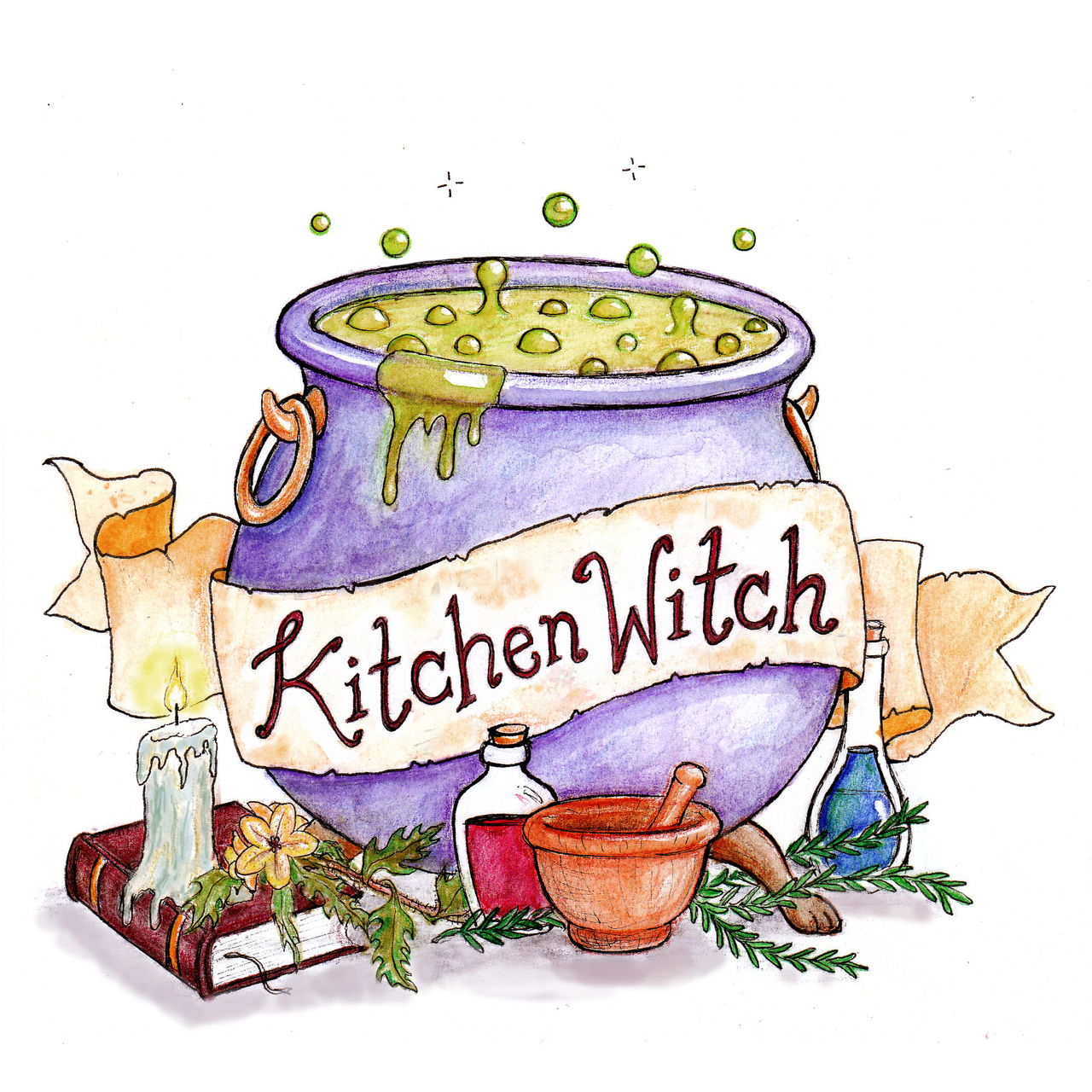Hello, wonderful witches!
Who’s ready for a feast this week? I know I am — I definitely need a day with family to recharge and relax. I intend to enjoy a massive serving of green bean casserole, my favorite side of the holiday. What’s yours?
Today’s issue is a combo of a few things I saw that I love and an article about kitchen witches in Italy and their favorite meal.
Book(s) of Shadows
Today’s recommended reads aren’t really books, but rather other Substack newsletters that are always great and recently sent out witchy issues. Check them out!
Smart Mouth and The Art of Ukrainian Wedding Bread
At Kitchen Witch, we love Ukraine — and we love bread that’s rich with symbolism and ritual. Check out this piece by Tasha Lowe-Newsome in Smart Mouth, the newsletter for all sorts of fun food news.
The Cauldron and Wolfenoot
The Cauldron by Lindsay Merbaum is one of my newer subscriptions, and I love everything coming out of it. Read this post for the story of a holiday invented by a little boy to honor dogs, some cocktails to enjoy, and an Interview with the Vampire review.
Bewitched by Bagna Cauda
By Michelle Arzino Roe
Hanging in my parents’ kitchen is a hand-painted stone depicting an elderly woman bent over a cauldron. She’s dressed in traditional village folk-wear, oft associated with the region of Piedmont, Italy. A scarf holds her hair back and an apron is tied around her colorful skirt. As she gazes intently into the pot of liquid, she holds a stir stick at hand. As I study the painting, I can’t help but think of my female relatives born of this region.
As an Italian American daughter, I grew up with tales of my ancestors shared around the table in spirited gatherings to celebrate food, family, and our heritage. As a child, we, also, had weekly visits with my great Aunt Melda, a single woman in her late 70s who had emigrated to America from Piedmont as a young woman. With no children of her own, she proudly taught us how to properly role gnocchi off the fork as well as experiment with vintage recipes made with random ingredients from her garden. Melda had an impish aura about her (it was rumored she had led a spontaneous and storied life) and she magically guided us through the kitchen as amateur alchemists breaking down the mysteries of culinary exploration and fine Italian cuisine.
Although our family had many tried-and-true recipes, it was whispered that on special occasions, Melda would toil in her kitchen to cook a distinctive homemade concoction, something I had never seen nor sampled. With the shake of a head, side eye, or snide comment from other elders, a definite warning was delivered: Due to its overly pungent smells, one should steer clear of this particular fare. Of course, this only piqued my interest to delve into the social nature of this wicked dish that, in my opinion, is one of worthy indulgence.
In the tiny town of Parolda located in Piedmont Italy, it is said that the women of the village are from a line of centuries-old shamans. Known as the “Masche” and described as “good white sorceresses,” these women would create enchanting delicacies believed to have healing powers, with recipes passed from generation to generation.
Parolda’s famed “witches’ dish” is called Bagna Cauda, or “hot bath.” Bagna Cauda is a creamy broth made with garlic, extra virgin olive oil, and anchovies. Served in a fondue-style ceramic pot, various vegetables and breads are dipped in this bewitching sauce. While the dense aroma curated by the garlic and anchovies is sure to curl toes, the different healthful properties of its main ingredients make for an interesting wellness remedy:
Garlic: May improve immunity, help with digestion, and promote heart health
Extra Virgin Olive Oil: May work as an anti-inflammatory as well as improve skin and hair health
Anchovies: May improve skin, eye, and bone health
Whether legend or lore, on the Night of St. Martin (the feast day of St. Martin of Tours) each November, the housewives of Parolda open their kitchens to invite guests to gather around a cauldron in a ceremonious ritual of sharing imagined spells, telling witch tales and feasting on Bagna Cauda.
I’m not sure if my great Aunt Melda was from the village of Parolda and I’m certainly not sure if I have any secret powers. But I find great pleasure in knowing that there is a form of social magic in the world. Fellow kitchen witches can begin planning an Italian gastronomic adventure for those special eves come November, or they can call from their own circle of sorceresses to relish in both the mythical and grounded gifts Bagna Cauda embodies any time of year.
Traditional Bagna Cauda
Ingredients
12 garlic cloves, peeled
1 to 3 tablespoons milk (optional)
¾ cup olive oil
20 anchovy filets (packed in oil)
1 to 3 tablespoons butter (optional)
Assorted vegetables and artisan bread
Directions
Simmer garlic cloves in milk for approximately 10 minutes, then drain. Note: This step is optional.
Cook garlic cloves in olive oil and sauté until cloves are soft and easily crushed.
Add anchovies and cook, stirring often, until they break, melting into a thick paste.
Taste. If the blend is too strong, add butter to tone down the flavor.
Transfer to a fondue-style ceramic warming pot.
Serve, Sip, and Savor
Crunchy vegetables such as carrots, celery, bell pepper, or a cardoon (a relative of the artichoke family) are complimentary dipping companions. Any fresh peasant-, country-, or Mediterranean-style bread is a must to dip in Bagna Cauda. Pair with a Barbera vintage of Italian wine to balance the salty flavor of the dish in a palette-pleasing ode to the Piedmont growing region.
Michelle Arzino Roe has more than 25 years of creating remarkable content for agencies, private corporate clients, and various lifestyle publications. Michelle’s articles and press releases promote travel destinations, food, fashion, entertainment, and celebrity profiles that drive audiences to venues, gigs, places, and spaces. She has covered red-carpet events, produced fashion shows, scripted media productions, penned blogs, and hosted international diplomats. She is a seasoned writer and editor with an eye for capitalizing on trends as well as evergreen subjects. Michelle is also an avid cook with an Italian flare for celebrating the good life.
In the next issue…
The next newsletter will have… well, I’m not sure yet. We’ll find out together!
See you then!









Always intriguing, Jennifer! Happy (*insert Holiday here!) 😂🍁
Great issue, Jen! I had never heard of Bagna Cauda but now I feel like I have to try it because it looks delicious!